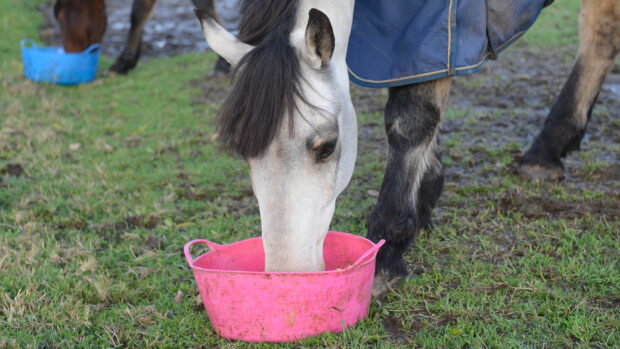Some of the information you will find on the feed bag has to be there by law, and must be headed “Statutory statement”.
Some is the company’s own words. The data included is:
- Name and purpose. This must indicate the name of the product and its purpose. There should be guidance on what sort of horse the feed is intended for and up to how much can be fed safely each day.
- Weight of the pack.
- Storage conditions. This is to ensure that the feed retains its quality during its shelf life.
- Indication of nutrient value. Oil, protein, fibre and ash content, expressed as percentages, must be stated, although some companies declare more than these on the bag or in their product literature.
It is also mandatory to declare any added vitamins A, D and E as well as the total content of the trace elements selenium, and copper.
- Ingredients. The exact wording is decreed by the Feeding Stuffs Regulations. Wording outside of this is illegal. Declarations can be either by ingredient or category of ingredient.
In the wake of BSE, owners are more sensitive to what goes in feeds, but reading these lists will prove that it is mainly cereals, fibrous materials and protein sources, such as soya that are in modern horse feeds. Any synthetic antioxidants, added to protect the oils and vitamins in the feed from deteriorating during its shelf life, must also be declared.
- Best before date. Legislation requires that this refers to the vitamin content, as this deteriorates with the age of the product, but the company must also ensure that the product does not go off in any other way.
- Establishments number. New on packaging this year, this code identifies that the manufacturing site has been authorised to make animal feeds.It is part of the extra safety measures taken to trace the feed manufacturing process, which was introduced in the wake of BSE.
- Claims can either be in the name of the product, or in any words used to describe it, such as “for animals at high risk of laminitis”, “promotes condition”, “natural”. As long as they don’t mislead you or represent a feature of the product it does not possess, they can be stated, but if in doubt, challenge the company making the claim.



